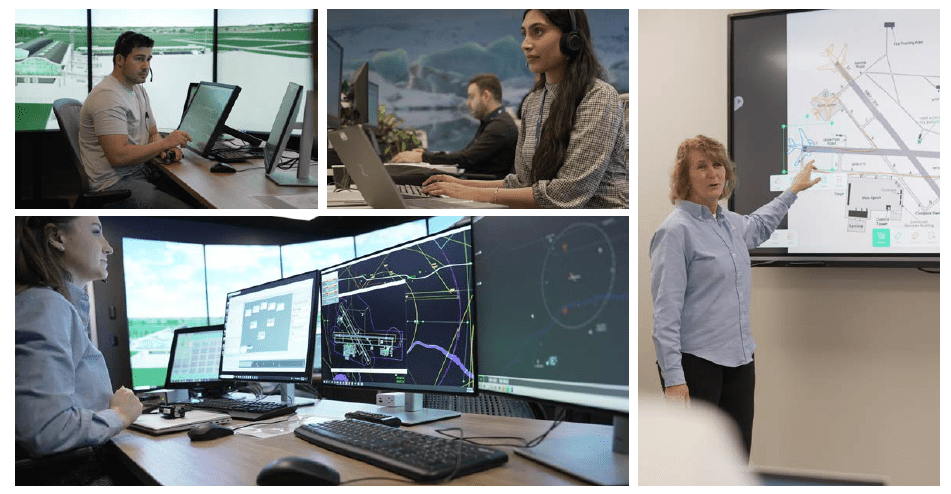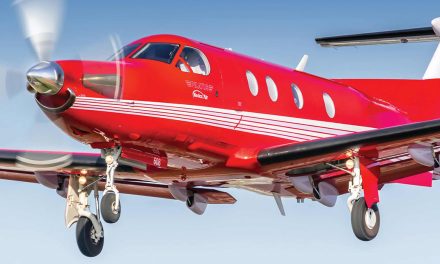By Caroline Phaneuf – ©CAE
The global aviation industry is facing a pressing challenge: a severe shortage of air traffic service (ATS) personnel. These include air traffic controllers, flight service specialists and other related jobs that manage aircraft on the ground or in the skies. The ATS staffing problem is not new, but it has grown acute in recent years and poses significant risks to both commercial and business aviation. The shortage threatens the industry’s ability to meet rising passenger and cargo demand while maintaining safety and efficiency in the skies.
A confluence of factors has led to this crisis including retirements of experienced controllers, disruptions and layoffs caused by the COVID-19 pandemic, the growing number of aircraft flying in some regions, and insufficient recruitment efforts. With eVTOLs expected to join the airspace soon, the skies will become even more crowded. The International Civil Aviation Organization (ICAO) estimated over 100,000 new air traffic controllers would be needed between 2017 and 2037, but many countries are still struggling to fill existing vacancies.
For commercial aviation, the implications are clear. Delays, congestion, and inefficiencies are becoming commonplace as controllers juggle an increasing number of flights with fewer staff.
Business aviation, which relies heavily on flexible schedules and rapid response times, is also feeling the strain. This sector thrives on offering seamless and personalized service, yet disruptions at busy hubs and regional airports have become more frequent. Business jets, often given lower priority during peak congestion, face longer taxi and wait times, reducing their competitive edge over commercial alternatives. Furthermore, an overburdened ATS workforce means less capacity to accommodate unscheduled flights, which are a cornerstone of business aviation.
Recognizing the critical nature of this issue, global aviation training leader CAE has expanded its portfolio to include air traffic services training.
As the largest provider of civil aviation training worldwide, CAE trains pilots, aircraft maintenance technicians, and commercial cabin crew. Last October, CAE started partnering in the training of air traffic controllers (ATCs) and flight service specialists (FSSs) with NAV CANADA – the world’s second largest air navigation service provider (ANSP) in terms of the size of its airspace.
Ultimate Jet got an exclusive behind-the-scenes look at CAE’s new air traffic services training centre in Montreal, Canada this winter, where almost 500 NAV CANADA ATS personnel will get their initial training over the next three years.
The instructors that CAE recruited from around the globe are delivering initial training for ATCs and FFSs using NAV CANADA’s training curriculum and courseware. NAV CANADA will continue to deliver basic training, all specialty courses, and on-the-job training, with the latter part of Air Traffic Services training solely offered by NAV CANADA. This new ATS training centre is a first for CAE, but the company is in talks with other ANSPs around the world to see how CAE can help them alleviate the shortage of ATS personnel in their countries. CAE is uniquely positioned to bring innovative solutions to the ATS sector. While many ANSPs manage in-house training academies, this can place a significant strain on resources, pulling focus away from core operations. By outsourcing to an expert training provider like CAE, ANSPs can benefit from a cost-effective and scalable solution that also enhances student-focused training.

«As ANSPs accelerate their airspace modernization efforts, it is critical that equal emphasis is placed on training innovation to prepare the next generation of air traffic personnel. CAE’s turn-key expertise in competency-based training design, advanced instructional delivery, and data-driven technologies can support ANSPs in this transformation,» said Marie-Christine Cloutier, Vice President – Strategy, Performance & Marketing at CAE and Head of CAE’s new Air Traffic Services (ATS) division. Competency-based training is an approach that focuses on practical outcomes rather than time spent in the classroom. This method ensures that graduates are fully prepared to step into operational roles upon completion of their training.
Other training enhancements CAE could offer include courseware modernization, cross-disciplinary training (bridging the gap between controllers & pilots), and using advanced data analytics to improve training outcomes, such as eye-tracking and biometrics. All these technologies can increase student throughput and reduce fail rates while maintaining the high standards of quality and safety required.
CAE’s entry into this space comes at a pivotal moment. Governments and aviation authorities worldwide need to invest in solutions to mitigate the ATS shortage, and CAE’s proven track record in aviation training makes it a trusted partner in these efforts.
For business and commercial aviation, the benefits of addressing the ATS shortage are immense. Reduced delays, improved efficiency, and enhanced safety for travelers and operators alike. As CAE continues to develop and refine its programs, the aviation industry will be better equipped to meet future demands.









